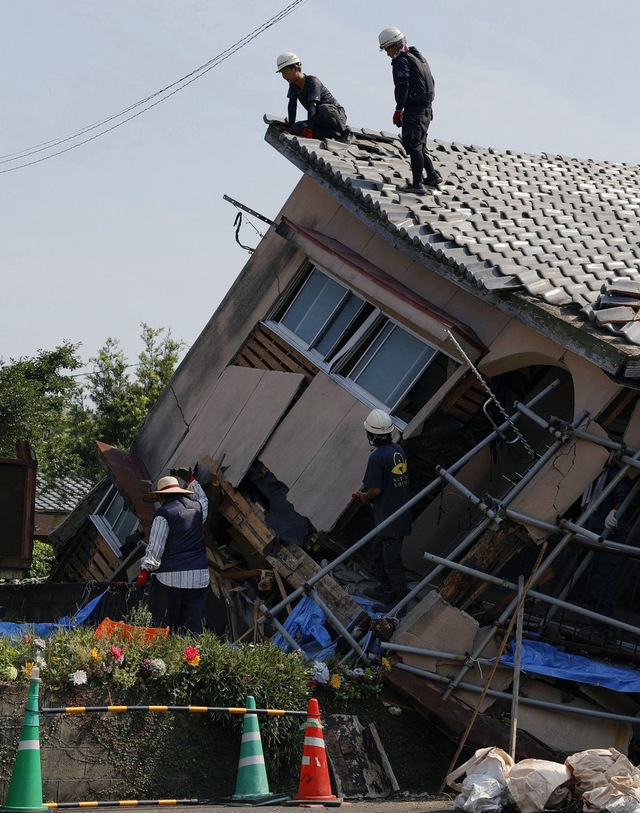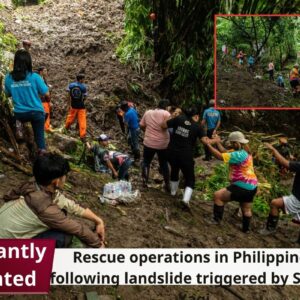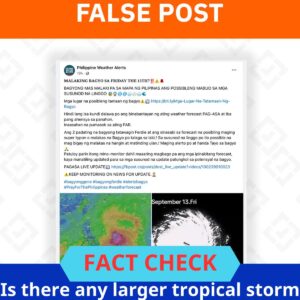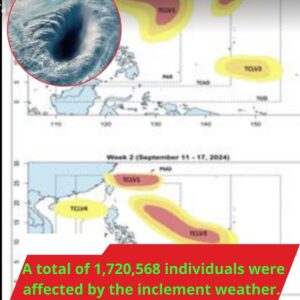Today (August 9), Japanese Prime Minister Kishida Fumio canceled his trip to Central Asia after scientists warned the country should prepare for the risk of a ‘super earthquake’.

The Japan Meteorological Agency (JMA) issued a mega-earthquake warning after seven people were injured in the south by a 7.1-magnitude quake that struck the island of Kyushu on August 8.
Kishida was scheduled to travel to Kazakhstan, Uzbekistan and Mongolia on August 9 and attend a regional summit.
“As prime minister with the highest responsibility for managing the crisis response, I have decided not to leave Japan for at least a week,” the leader told reporters, AFP reported.
Kishida added that the public should be extremely worried after the JMA issued its first warning based on a new system built after the 9.0-magnitude quake that triggered a tsunami and nuclear disaster in 2011.
“The risk of a major earthquake is higher than usual, but that does not mean an earthquake is certain,” the JMA said.
Tokyo authorities have previously warned of a 70 percent chance of a mega-earthquake occurring within the next 30 years.
The predicted quake could have widespread impacts on Japan’s Pacific coast and could threaten 300,000 lives in the worst case, experts say.
These include an earthquake in 1707, when Mount Fuji last erupted, in 1854, and then two double earthquakes in 1944 and 1946.
News
SHOCK at close-up rescue operations in Philippines following landslide triggered by Storm Yagi
Search and rescue operations continue in Antipolo, Rizal, at the site where people may be buried following a landslide triggered by Tropical Storm Yagi (Anadolu via Getty Images) Search and rescue operations continue in Antipolo, Rizal, at the site where…
HOT:Super Typhoon Yagi kills four in Vietnam after casualties in China and Philippines
Summary Yagi is Asia’s most powerful storm this year Winds reach up to 160 kph as Yagi approached Vietnam Death toll stands at 22 people HANOI/HAIPHONG, Sept 7 (Reuters) – Asia’s most powerful storm this year made landfall in northern…
FACT CHECK: No expected tropical cyclone bigger than the Philippines
FACT CHECK: No expected tropical cyclone bigger than the Philippines The potential weather disturbances that have a ‘high probability’ of developing into tropical cyclones in the next two weeks have yet to have intensities determined Claim: According to a Facebook post,…
PAGASA warns of three tropical cyclone -like threat for the next 2 weeks
This photo shows Coast Guard personnel rescuing residents in Northern Samar during the onslaught of Severe Tropical Storm Enteng (international name: Yagi). Released / Philippine Coast Guard MANILA, Philippines — After Severe Tropical Storm Enteng (international name: Yagi), several tropical cyclones…
The truth about the super large storm about to appear near the East Sea
Rumors of a super typhoon forming near the East Sea, larger than the area of the Philippines, are spreading on social media. Rappler’s latest typhoon report says that according to a Facebook post, the Philippine Atmospheric, Geophysical and Astronomical Services…
(Video)Close-up of the aftermath in the first place affected by Typhoon Yagi.
The scene was extremely chaotic and severely damaged after the storm. There was great loss of life and property. According to initial statistics from experts, the estimated damage was up to 6 million USD and is at risk of increasing….
End of content
No more pages to load











